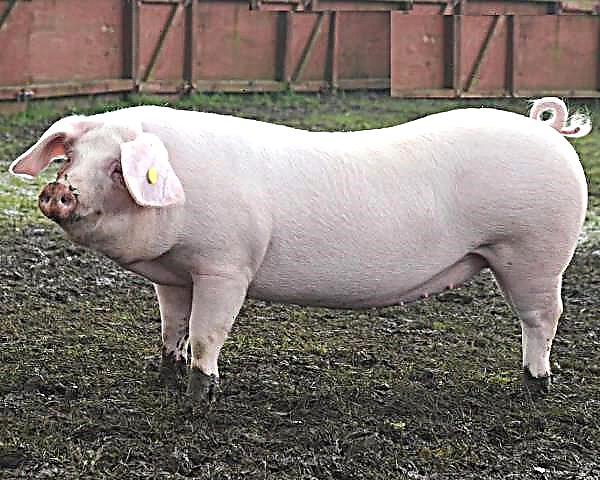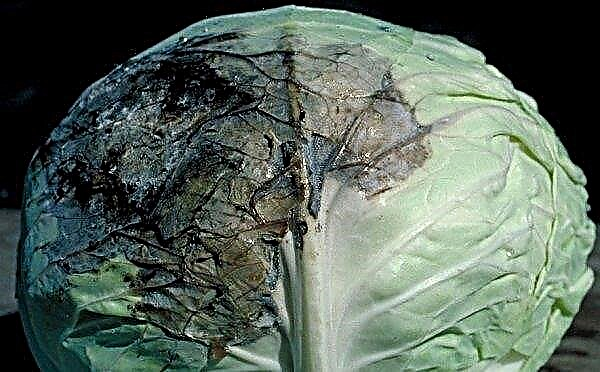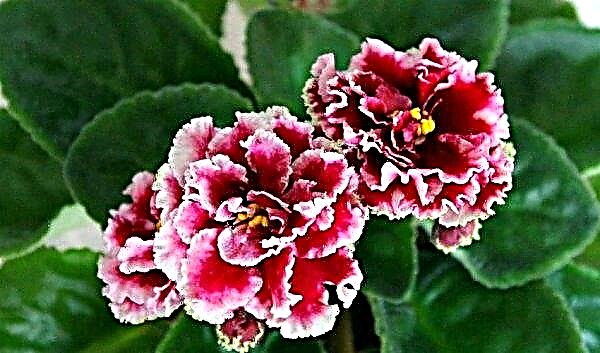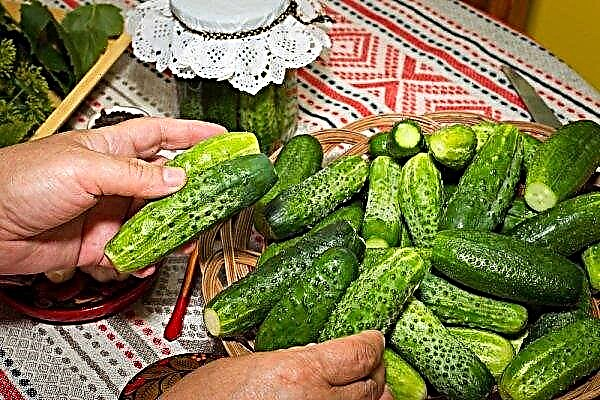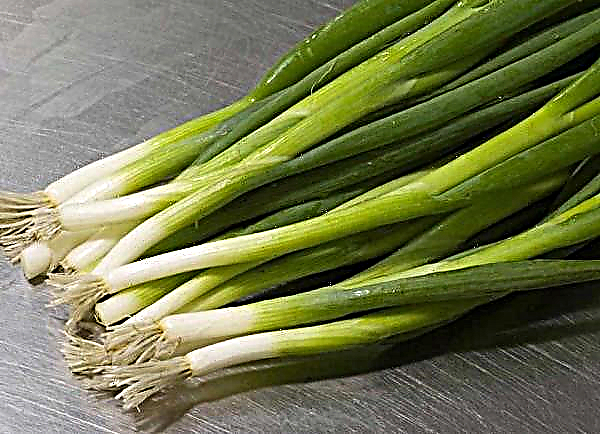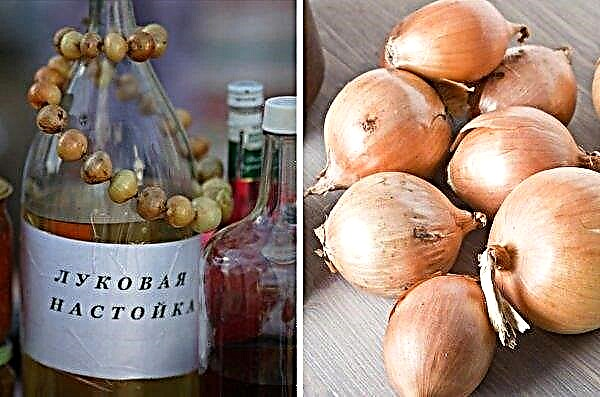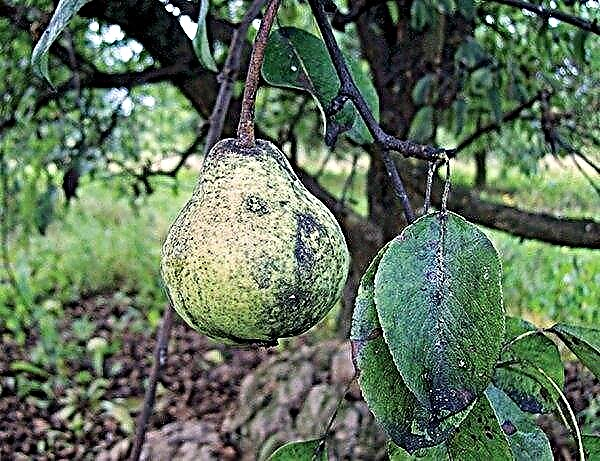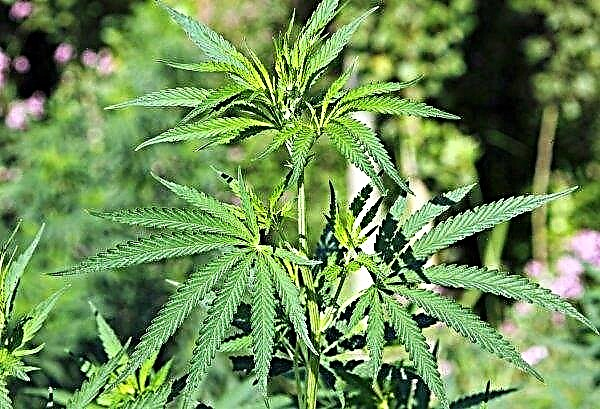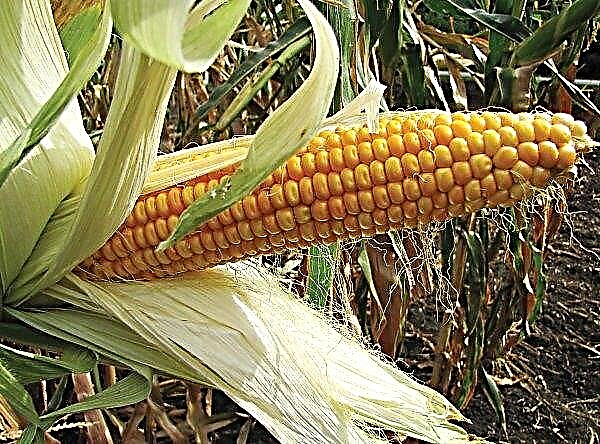With the advent of spring, primroses blossom in gardens and parks. Due to the bright colors, unpretentiousness and the fact that these flowers bloom first, they enjoy well-deserved attention of gardeners. Read more about how to plant primrose, and about the rules for caring for them in the open ground, read further in the material.
Plant description
The international name of this flower is primrose (lat. Primula). The genus Primroses (Primulaceae), to which the primrose belongs, is one of several members of the Primrose family. It has at least 390 species, most of which grow in temperate climates. All these are grassy crops, among which there are both annuals and perennials.
Primula vulgaris (Primula vulgaris) - the most common garden primrose. The height of the plant is 10-30 cm. It is characterized by the presence of a rosette of leaves near the ground, with a short stem in the center.

Botanical description of the genus Primrose:
- distribution area: temperate zones of western and southern Europe;
- in the natural environment it grows under bushes in deciduous forests, on clearings, roadsides, near railway tracks, on open pastures; in areas rich in humus, sometimes on stony loams;
- flowering: February - March;
- flowers: pale yellow with green veins; 2–4 cm in diameter, grow on thin stems;
- fruit: seed box;
- pollinators: insects;
- leaf outlet: basal;
- leaves: 5–25 cm long, 2–6 cm wide, wrinkled, gradually tapering to the stem, with a serrated edge.
Common species
In nature, there are at least 390 species of primrose. In addition, breeders from different countries regularly grow new hybrids of these spring flowers, which are announced at the annual flower exhibitions. Their catalogs also provide information on how to plant and care for the variety after purchase. If you select and plant several different primroses, you can get a flowerbed with a longer flowering time.

Common
Primula vulgaris (Primula vulgaris) is a semi-evergreen perennial plant that grows in southern Europe and western Asia. Her pale yellow flowers bloom in early spring, as soon as the snow begins to melt. The plant grows well in partially shaded areas, shady gardens, along paths, under trees, along streams and wetlands. The flower is so common in grazing areas that it does not need to be specially planted. But if you wish, you can pick up wild plants in the meadow in the spring and plant them in the country or in the garden.
This compact, unpretentious plant, 10-15 cm high and 10-22 cm wide, with a rosette of leaves at the base. Their distinguishing feature is the center of a darker shade than the petals. These fragrant flowers will delight you until the middle of spring.
 The diameter of the yellow five-petalled flowers is 2.5 cm.
The diameter of the yellow five-petalled flowers is 2.5 cm.
Auricula
The ear-shaped primrose (Latin Primula auricula) is an evergreen perennial with leathery, often powdery foliage and simple umbrella flowers in the form of a tray, usually pink, purple or yellow. It grows on stony soils in the mountains of Europe, including the western Alps, Jura Mountains, Vosges, Black Forest and Tatra Mountains. In central Europe, the plant is called a mountain barn or a bear ear because of the characteristic shape of the flowers.
Important! In summer, the soil for primrose may be slightly drier, but it should never dry completely. These plants do not tolerate summer heat.
Auricula is characterized by rich color, bright shades and a delicious aroma. Flowering will last from mid-March to April. You can plant a plant with seedlings or seeds. Primrose grows well in open ground, greenhouses and in pots on the windowsill. The height of a flowering plant is 15–45 cm. To date, thousands of indoor varieties based on this species have been obtained.
 Caring for them after the purchase is no more difficult than for wild primrose.
Caring for them after the purchase is no more difficult than for wild primrose.
Pubescent
Pubescent primrose (Primula x pubescens) is a hybrid. Parent species were P. auricula and P. hirsuta (P. rubra). This is a plant with bright 5-petal flowers growing up to 30 cm in height. Initially, the plant was characterized by pink-raspberry flowers, but now many varieties with a different color, including yellow, pink, red, purple and white, have been bred. Flowers appear in groups (umbrellas) on the tops of stems rising from the basal rosette. Flowering begins in mid-April and lasts until mid-May. The leaves of the primrose are leathery, oblong, green.
It can be planted in pots and outdoors. Prefers moist, well-drained soil. It completely tolerates the shadow, but it is better to choose a sunny area for primrose. Suitable for rock gardens and for the design of flower beds. It is recommended to propagate by division after the flower fades.

Fine toothed
Fine-toothed primula (Primula denticulata) is one of the easiest species to grow, perfectly adapting to most climatic conditions. It grows throughout Southeast Asia. The plant forms a rosette of large, oblong-oval green leaves, at the ends of which grow vertical stems with a ball of flowers. The diameter of this spherical inflorescence reaches 10 cm, and the height and width of the primrose itself are 30 cm.
Important! Usually primrose, which you buy by March 8 — these are annual plants (Primula × polyantha). They will not be able to save until next year.
Color varies from white to shades of pink, purple, blue. Flowers have a delicate aroma and are suitable for cutting. Flowering continues from mid-April to late May. A distinctive feature of the species is its large size and thick peduncles. In some varieties, they reach a height of 60 cm. Plants prefer uniformly moist soil and grow well next to a pond or stream. In cool conditions, they remain attractive even under the bright sun. But you need to make sure that the soil is constantly moist.
High
Primrose high (Primula elatior, oxlip) - one of the most convenient varieties. It can thrive on low nutrient soils, but they must be rich in calcium. The species is widespread throughout Europe and is even found on the Kola Peninsula. It grows in moist forests and meadows.
This is a herbaceous perennial, the rosette of which grows to a diameter of 25 cm, and peduncles - to a height of 30 cm. In the spring, light yellow flowers appear on a high stalk. There will be 10-30 clusters together on one stalk. The width of each flower is 9–15 mm. The light green cup-shaped cup has darker green ribs. Flowers are wide open, characterized in that they are turned in one direction.
Outwardly, the look is very similar to the spring primrose (Primula veris), but the difference lies in the fact that the primrose high has larger flowers. The leaves are dark green, oval, wrinkled. They grow in the form of a basal rosette and have long cuttings.

Cortex
Primrose cortusoid (Latin Primula cortusoides) is a very common species in the territory from the Urals to China. This original plant has delicate clusters of pink star-shaped flowers with yellow eyes that bloom in mid-spring. Small serrated leaves are collected in a rosette and remain bright green throughout the season.
Important! The primrose cortus is listed in the Red Book and it is forbidden to tear it.
The primrose is kortuzovidny to 30 cm in height. Her flowers rise on stems at least 20 cm high. If you intend to create a carpet of plants, then plant them at a distance of 15 cm from each other. It is characteristic of foliage that it remains as if pressed to the ground. Under ideal conditions, the plant is able to live and bloom for about 5 years. It is best grown in partial shade with uniformly moist soil. The species is tolerant of urban pollution, but it shortens its lifespan.

Julia
Primula juliae is a species discovered by Julia Mloskosevich, daughter of a Polish aristocrat, botanist Ludwig Mloskosevich, in the Eastern Caucasus in the Tiflis region around 1900. The plant is characterized by bright purple color, miniature and endurance. The height of the plant does not exceed 10 cm. Primrose Julia has a small basal rosette, round, jagged leaves of a light green hue and raspberry flowers. They consist of 5 petals, similar to hearts, and a small yellow middle.
Currently, this species is listed as rare or endangered in most of Russia. Since the discovery of the first plants, many of them have been obtained by crossing with other species. But during the years of World War II, many of the original varieties were lost, so it is almost impossible to meet Primula juliae in its original form.

Orchid
Primrose orchid or primrose vial (Primula vialii) grows in moist meadows and near ponds in the south and west of China. This is a herbaceous perennial plant that grows up to 40 cm. At the beginning of development, its flowers look like narrow green spikelets that turn red and then open pink from the base up, so they appear two-tone. The period of active vegetation lasts from May to September inclusive. Flowering begins in June and ends by the end of July. A transplant is recommended from September to November.
This species is great for growing along with ferns in partially shaded and well-drained areas. It can be massively planted near artificial reservoirs. And in this case, shading is optional, because it is compensated by high humidity.

Mealy
Mealy primrose (Primula farinosa) is a perennial growing in northern Europe and Asia in meadows rich in moisture. Its height is 3–20 cm. The leaves are located in basal rosettes; they are oblong, lanceolate, up to 10 cm long, up to 2 cm wide. The upper part of the leaf plate is smooth, and the lower part seems slightly powdery. From here comes the name of the species - powdery.
Did you know? Japanese primrose (Primula japonica) — the owner of an extremely original "candelabrum" peduncle. The flowers on it are located in several tiers.
Violet-blue flowers of primrose farinose appear in early spring in the form of a round cluster of a dozen specimens on the tops of thick stems. Each flower has 5 petals that look like hearts.

Care in the garden from the moment of planting in the open ground
Primrose is considered a street plant, although it can be grown in pots indoors. If we are talking about indoor primrose, then you need to remember that after they fade, they need to be taken out of the room and placed in a protected place in the summer garden or on the terrace. In spring, the plants "wake up" themselves, and when they bloom, they can be brought into the building. They will need a bright sunny window sill, but in such a way that direct sunlight does not fall on them.
Did you know? Primrose has its own special holiday. April 19 in the UK celebrate primrose day.
For plants in the garden, a number of conditions must be observed:
- Organize the right combination of light, water and nutrients. Most varieties will thrive if the sun shines in the morning and the area is shaded after lunch.
- Air temperature should be moderate - not higher than + 15 ° С. Extreme heat will cause wilting.
- Need a nutrient-rich moist soil. Good drainage is also required, otherwise the plant will begin to rot.
- Feed weak fertilizer during flowering. Enough 1-2 times per season.

Watering
For normal life, the flowers in question need moisture: with its lack, the plant will fade, and with excess, it will begin to hurt. Primrose also needs soil that will be moist. If, having touched the soil with your finger, you do not feel moisture, then it is time to water. But do not allow moisture to get on the leaves - this contributes to the propagation of phytopathogens and primrose diseases.
In August, water especially often. At this time, the laying of flower buds of the next season takes place and the plant definitely needs a lot of water. Watering of street plants is stopped just before the frost.
Important! If water from the city water supply is used for irrigation, then it must be defended in order to reduce the amount of chlorine ions. It is harmful to plants.
Top dressing
Fertilize primroses in early spring. They need a balanced fertilizer in which nitrogen, potassium and phosphorus will be in equal proportions. For example, 10 × 10 × 10, 14 × 14 × 14 or 5 × 10 × 5, where the dose of potassium is increased for the development of the root system. Most fertilizers consume two-tone primrose. They need to be fertilized 2 times per season: in early spring and in July after flowering.

In soils with high pH (alkaline soils), an additional amount of iron or sulfate must be added to reduce the chlorosis (yellowing) of the leaves. Yellow foliage can also be caused by a lack of nitrogen in the plant. Both that, and another can be corrected by top dressing with the corresponding fertilizers.
Pruning
At the end of winter, after the last frost, dry foliage and stems are removed from the flower garden. After that, you do not need to trim anything before the first half of summer. In the fall, at the end of the season, gardeners do not recommend removing anything, since the leaves become a cover layer and protect the roots from frost.
Did you know? In the Middle Ages, primrose was used to treat paralysis, gout and rheumatism. Also, this flower was part of the alchemical anti-aging potions.
How to prepare a plant for winter
Most varieties tolerate frosts well up to -30 ° C and do not require shelter for the winter. But if the winter is not snowy, then in order to protect the roots from low temperature, plants can be covered with a layer of mulch. It can be bark, pine needles or chopped straw.
If the primrose is grown in the room, then the pots with it are taken out of the room immediately after they have faded (in July). This plant is not intended for a long stay indoors. In winter, they can be taken out to the basement or any other room where the temperature will not exceed +8 ... + 12 ° С. Be sure to provide them with watering 2 times a month, since in a completely dry soil the root system can die.

Breeding
When planting primroses in the home area, you need to pay attention to the distribution area of the variety. Two large groups can be distinguished here: those that grow on marshy soils, and those that grow on rocks. The former needs humus rich, moist areas, and the latter needs dry ones. Propagation of flowering plants is possible in several ways. All of them can be propagated by seeds, and in the natural environment this is the only way to reproduce.
At home, the following are also available:
- division of the bush;
- planting seedlings;
- cuttings.

You need to divide the old bushes, whose age is above 3 years. They are easy to notice by the fact that there can be several growth points and many small leaves on the outlet. Seedlings are grown in early spring from seeds harvested in summer. Cuttings are the planting of a leaf of primrose in the soil for rooting. As soon as this happens, the plant will create a new growth point and the first leaves will appear from it next to the leaf that you planted. Expect the first flowering in the second year after planting. Primrose is hardy and must tolerate winter well.
Bush division
The division of the bush is carried out in August or early autumn - after the plants bloom and the period of active vegetation ends. Such an event should be held every 3-4 years.
How to share a bush:
- Look at your plants and visually highlight those with a lot of leaves, but they are smaller than they should be by the standard of the variety. Such a bush is time to share.
- Dig it around and remove along with a piece of soil.
- Divide gently with a knife into 2 parts. Try to damage the minimum number of roots. On each part, approximately the same number of growth points should remain.
- Dig 2 holes on a bed. Their depth and width should be 2 times the size of the root ball.
- Lay a drainage layer on the bottom.
- Mix the removed earth with compost or humus.
- Pour some of the prepared mixture into the drain.
- Install a plant from above and fill the hole with soil mixture.
- Pour over water.
- Seal the earth.
- Put a layer of mulch on top. This can be chopped straw, needles, tree bark, sawdust. The layer will prevent the rapid evaporation of moisture and overheating of the soil, as well as the growth of weeds.

Sowing seeds
The best time for sowing seeds in the soil is from February to April. A little frost can help germination, but if it is snowing, then postpone the sowing until it comes down. Even if sown at the end of May, primrose will sprout, but they will still bloom next year. The latest sowing date is July. It should be borne in mind that this is the hottest month and the soil will have to be watered every morning.
Step-by-step instructions for sowing seeds in the soil:
- The bed is dug up, removing stones and weed roots that may be in the soil.
- If you have time, you can cover the place of future planting with black film. The soil under it will warm up under the sun to + 60 ° C. As a result, wintering pest larvae, plant pathogens and weed seeds will die.
- Now, at the landing site, you need to make a small trench up to 5–7 cm deep and lay a layer of pebbles or gravel at the bottom.
- If the soil is clay and heavy, it must be improved by mixing with compost or humus. And pour on a layer of pebbles.
- Next, you need to moisten the soil.
- Sprinkle seeds in a row on top. The distance does not matter much, because not everyone will sprout on the bed. When the seedlings grow, they can be planted more evenly.
- Press the seeds to the soil and sprinkle fine sand on top.
 Planting will need to be periodically moistened throughout the entire development of the plants. But it is not necessary to cover the seeds with a film on the street - under it the temperature will be too high for primrose.
Planting will need to be periodically moistened throughout the entire development of the plants. But it is not necessary to cover the seeds with a film on the street - under it the temperature will be too high for primrose.
Growing seedlings from seeds
In the natural environment, the cultivation of any flowering plants comes from seeds. In spring, during flowering, insects pollinate them, and seed bolls form in place of flowers. They can be collected as soon as they begin to dry, and laid out on a sheet of paper in a dry, warm room. Once the boxes have dried, you need to remove the seeds from them and put them in a jar until planting. If stored in a refrigerator, they can remain viable for several years.
Growing them on the street is possible after the air warms up to + 10 ° C. But some gardeners prefer to first grow seedlings, and then proceed to planting it. This method has many advantages: you can control the process of seedling growth, it "will not be lost" among the grass and will not be accidentally removed along with it. For seedlings, seeds can be sown in February. And you need to plant seedlings in the soil after the soil frosts have passed.

Seedlings of garden primrose need good lighting and air for germination, so the seeds are recommended to be sown on top of compost and not covered with soil. Also note that varieties in which two-color flowers - for example, auricular and elatior - germinate 2 times slower than others.
Step-by-step instructions for growing seedlings from seeds:
- Prepare the landing container. If it was used in the previous season, it must be washed with soap.
- Prepare the soil mixture. For planting, you need a layer of vermiculite or very fine-grained gravel. On top of it lay a layer of compost or sod land.
- Seeds are sown on the surface of the prepared soil. Press them lightly with your hand and moisturize.
- Cover with a film and put the container in a place where direct sunlight does not fall.
- The soil should not dry out, so moisture should be monitored daily.
- As soon as the seeds germinate, the film is removed. Germination takes about 3 weeks. For slowly germinating - 5-6 weeks.
- The ideal temperature for germination is +12 ... + 15 ° C. Do not let her rise higher. A lower temperature will not cause harm, but above + 18 ° C - it is fatal for tender seedlings.
- As soon as the plants have 4 true leaves, they can be dived into separate cups for further development. In this case, it is necessary to separate the lower part of the core root in order to stimulate the development of lateral roots.

Planting seedlings in the ground is performed as soon as the air in the street warms up to + 10 ° C. This will happen around late April or early May. Night temperature should not fall below + 5 ° С.
Diseases and pests
Primrose is rarely sick and affected by pests - this is due to the fact that its flowering season passes earlier than most insects begin to awaken and develop. But it is impossible to completely exclude the likelihood of infection, so the gardener should take preventive measures: monitor the condition of the plants, spray them with fungicides when signs of disease appear, or insecticides if pests appear. The number of treatments should always be at least 2.
The main diseases that you should pay attention to:
- gray rot (botritis);
- powdery mildew;
- leaf spotting.

The main symptom of gray rot is wet gray spots on the leaves. Later they become reddish brown. The development of the disease contributes to moisture and cool weather. Spray with Skor or Fundazol and be sure to remove all damaged parts of the primrose. Repeat treatment after 3 days.
Powdery mildew manifests itself in the form of a gray-white coating, similar to flour. Over time, the spots grow, the leaf turns brown and fades. Use for treatment "Scor" or "Fitosporin." Repeat the treatment after a week. Leaf spotting manifested by round purple spots, which gradually increase. Spray the plant with Bordeaux liquid 1%, after removing the damaged leaves.
Did you know? According to legend, primrose appeared where the keys to paradise fell, which the Apostle Peter accidentally dropped from heaven. Maybe that's why this flower in Russia is called "keys".
All diseases can be easily avoided if you do not pour water on the leaves and observe the distance between the plants when planting. Good air circulation helps maintain health, and the right distance does not give the diseased flower the opportunity to infect neighboring ones through direct contact.
Primrose can periodically be disturbed by:
- Aphids - These are tiny insects of a dark color with a soft body that settle in groups at the tips of young leaves and flower stems, sucking out the juices. Then the plants lag behind in growth and are deformed. Aphids can be destroyed by spraying with a solution of water with insecticidal soap.

- Spider mites - pests that settle on the underside of leaves. They are very small and difficult to notice. As a result of their activity, the leaves turn yellow and eventually fall off. Against ticks apply "Tiofos" or "Fitoferm".

- Slug - These are mollusk pests that feed on leaves and stems, often at night. To prevent slugs from reaching the plants, the aisles are sprinkled with broken shell. It is too stiff, and the mollusks simply cannot overcome it.

- Thrips - do harm by piercing and sucking the cells of plant tissue from the surface of the leaves. This leads to the formation of silver-gray spots, and with a high frequency of infection, the leaves can dry. To combat thrips, Fitoverm, Aktelik, Karbofos preparations are suitable, as well as a soap solution (15 g of soap per 1 liter of water) or a celandine decoction (400 g of leaves per 1 liter of water).

So, primroses are not too picky and very beautiful flowers. In addition, they appear earlier than others and can grow on any soil. Therefore, they can be grown on home beds, as well as decorate areas near places where there are many visitors.





